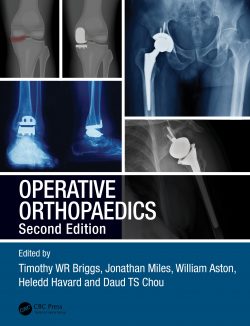This book covers such plants with edible modified storage subterranean stems (corms, rhizomes, stem tubers) and unmodified subterranean stem stolons, above ground swollen stems and hypocotyls, storage roots (tap root, lateral roots, root tubers), and bulbs, that are eaten as conventional or functional food as vegetables and spices, as herbal teas, and may provide a source of food additive or neutraceuticals. This volume covers selected plant species with edible modified stems, roots and bulbs in the families Iridaceae, Lamiaceae, Marantaceae, Nelumbonaceae, Nyctaginaceae, Nymphaeaceae, Orchidaceae, Oxalidaceae, Piperaceae, Poaceae, Rubiaceae and Simaroubaceae. The edible species dealt with in this work include wild and underutilized crops and also common and widely grown ornamentals. To help in identification of the plant and edible parts coloured illustrations are included.
As in the preceding ten volumes, topics covered include: taxonomy (botanical name and synonyms); common English and vernacular names; origin and distribution; agro-ecological requirements
edible plant parts and uses; plant botany; nutritive, medicinal and pharmacological properties with up-to-date research findings; traditional medicinal uses; other non-edible uses; and selected/cited references for further reading. This volume has separate indices for scientific and common names; and separate scientific and medical glossaries.
Introduction
Solanaceae
Solanum tuberosum
Tropaeolaceae
Tropaeolum tuberosum
Typhaceae
Typha angustifolia
Typha domingensis
Zingiberaceae
Alpinia conchigera
Alpinia galanga
Alpinia latilabris
Alpinia malaccensis
Alpinia officinarum
Alpinia zerumbet
Boesenbergia rotunda
Curcuma aeruginosa
Curcuma longa
Curcuma mangga
Curcuma zanthorrhiza
Curcuma zedoaria
Kaempferia galanga
Kaempferia rotunda
Zingiber montanum
Zingiber officinale
Zingiber spectabile
Medical Glossary
Scientific Glossary
TK Lim (Tong Kwee Lim) obtained his
Bachelor and Masters in Agricultural Science from the University of Malaya and
his PHD (Botanical Sciences) from the University of Hawaii. He worked in the
University of Agriculture Malaysia for 20 years as a lecturer and Associate
Professor; as Principal Horticulturist for 9 years for the Department of
Primary Industries and Fisheries, Darwin, Northern Territory; 6 years as
Manager of the Asia and Middle East Team in Plant Biosecurity Australia,
Department of Agriculture, Fisheries and Forestry, Australia; and 4 years as
Research Program Manager with the Australian Centre for International
Agriculture Research (ACIAR), Department of Foreign Affairs and Trade,
Australia before he retired from public service. He has published over a
hundred scientific papers including several books: “Guava in Malaysia:
Production, Pest and Diseases”, “Durian Diseases and Disorders”,
“Diseases of Mango in Malaysia”, chapters in books, international
refereed journals, conference proceedings (as editor) and technical bulletins
in the areas of plant pathology, crop protection, horticulture, agronomy and
quarantine science. He was also a reviewer of scientific papers for several
international scientific journals. As Principal Horticulturist in Darwin, he
and his team were instrumental in establishing the horticultural industry in
the Northern Territory, Australia, especially on tropical fruits, vegetables,
culinary herbs, spices / medicinal herbs and tropical flowers. During his
tenure with Plant Biosecurity, he led a team responsible for conducting pest
risk analyses and quarantine policy issues dealing with the import and export
of plants and plant products into and out of Australia for the Middle East and
Asian region. During his time with ACIAR, he oversaw and managed international
research and development programs in plant protection and horticulture covering
a wide array of crops that included fruits, plantation crops, vegetables,
culinary and medicinal herbs and spices mainly in southeast Asia and the
Pacific. In the course of his 4 decades of working career he has travelled
extensively worldwide to many countries in South Asia, East Asia, southeast
Asia, Middle East, Europe, the Pacific Islands, USA and England, and also
throughout Malaysia and Australia. Since his tertiary education days he always
had a strong passion for crops and took an avid interest in edible and
medicinal plants. Over the four decades, he has taken several thousands of
photographs of common, known and lesser known edible, medicinal and non-medicinal
plants, amassed local literature, local indigenous knowledge, books, and has
developed and established close rapport with many local researchers,
scientists, growers and farmers during the course of his work and travels. All
relevant available and up-to-date information collated on more than a thousand
species of edible, medicinal and non-medicinal plants will be provided in a
comprehensive reference series fully illustrated with coloured images to help
in plant identification. This work will cover scientific names, synonyms,
common and vernacular names, origin and distribution, agroecology, edible plant
parts and uses, plant habit /description, nutritive and medicinal value, other
uses and selected current references. Additional information is provided on the
medicinal uses and pharmacological properties of the plants. This work will be
of significant interest to scientists, researchers, practitioners (medical
practitioners, pharmacologists, ethnobotanists, horticulturists, food
nutritionists, agriculturists, botanists, herbalogists, herbologists,
naturalists, conservationists, extension scientists, teachers, lecturers),
students and the general public.
This book continues as volume 11 of a multi-compendium on Edible Medicinal and Non-Medicinal Plants. It covers such plants with edible modified storage subterranean stems (corms, rhizomes, stem tubers) and unmodified subterranean stem stolons, above ground swollen stems and hypocotyls, storage roots (tap root, lateral roots, root tubers), and bulbs, that are eaten as conventional or functional food as vegetables and spices, as herbal teas, and may provide a source of food additive or neutraceuticals. This volume covers selected plant species with edible modified stems, roots and bulbs in the families Iridaceae, Lamiaceae, Marantaceae, Nelumbonaceae, Nyctaginaceae, Nymphaeaceae, Orchidaceae, Oxalidaceae, Piperaceae, Poaceae, Rubiaceae and Simaroubaceae. The edible species dealt with in this work include wild and underutilized crops and also common and widely grown ornamentals. To help in identification of the plant and edible parts coloured illustrations are included.
As in the preceding ten volumes, topics covered include: taxonomy (botanical name and synonyms); common English and vernacular names; origin and distribution; agro-ecological requirements; edible plant parts and uses; plant botany; nutritive, medicinal and pharmacological properties with up-to-date research findings; traditional
medicinal uses; other non-edible uses; and selected/cited references for further reading. This volume has separate indices for scientific and common names; and separate scientific and medical glossaries.
100 coloured illustrations in this volume
Referenced up-to-date-information on nutritive and medicinal properties, and other non-edible uses
Botanical description and common and vernacular names to help in plant identification
Medical and scientific glossaries





